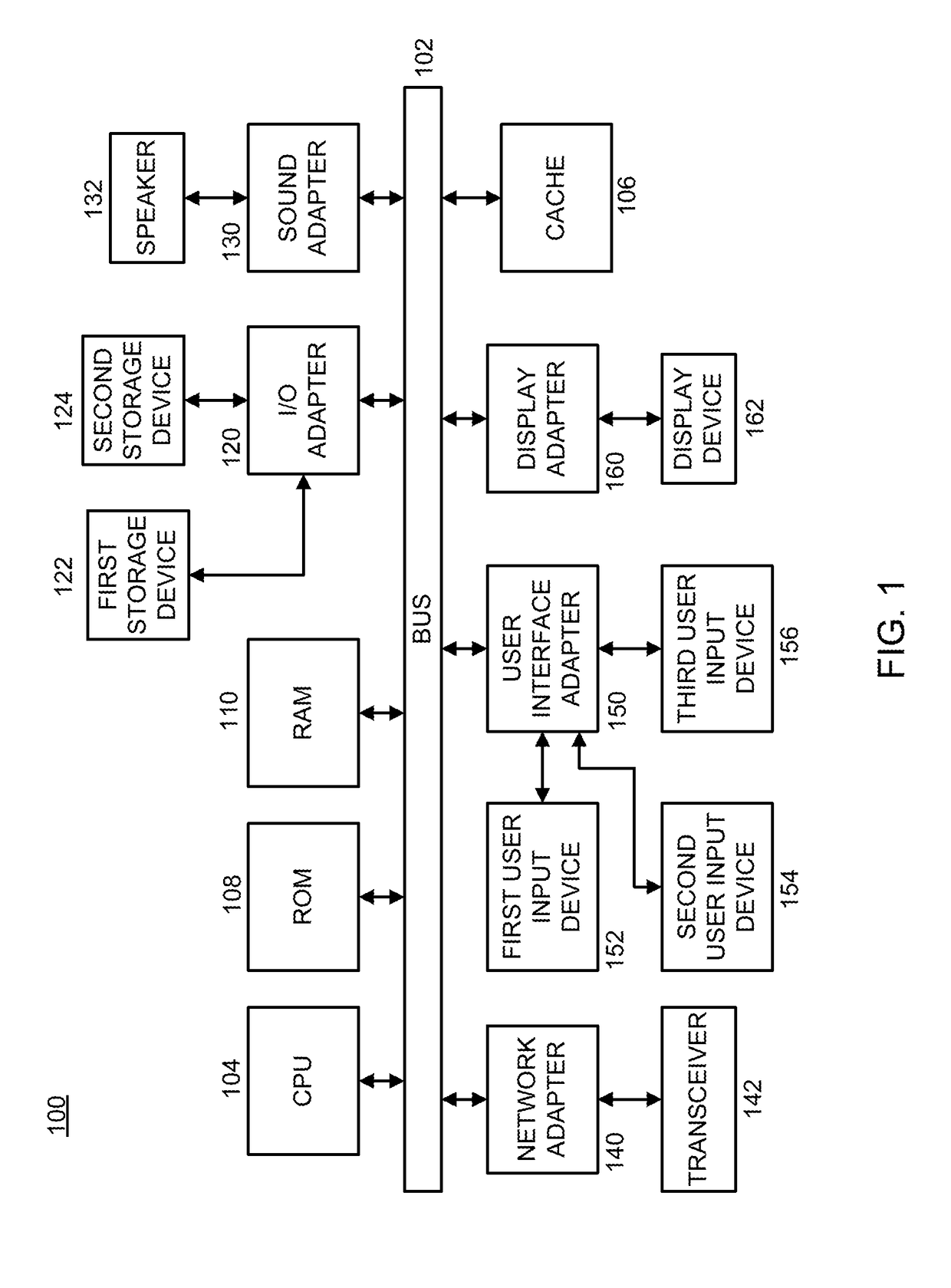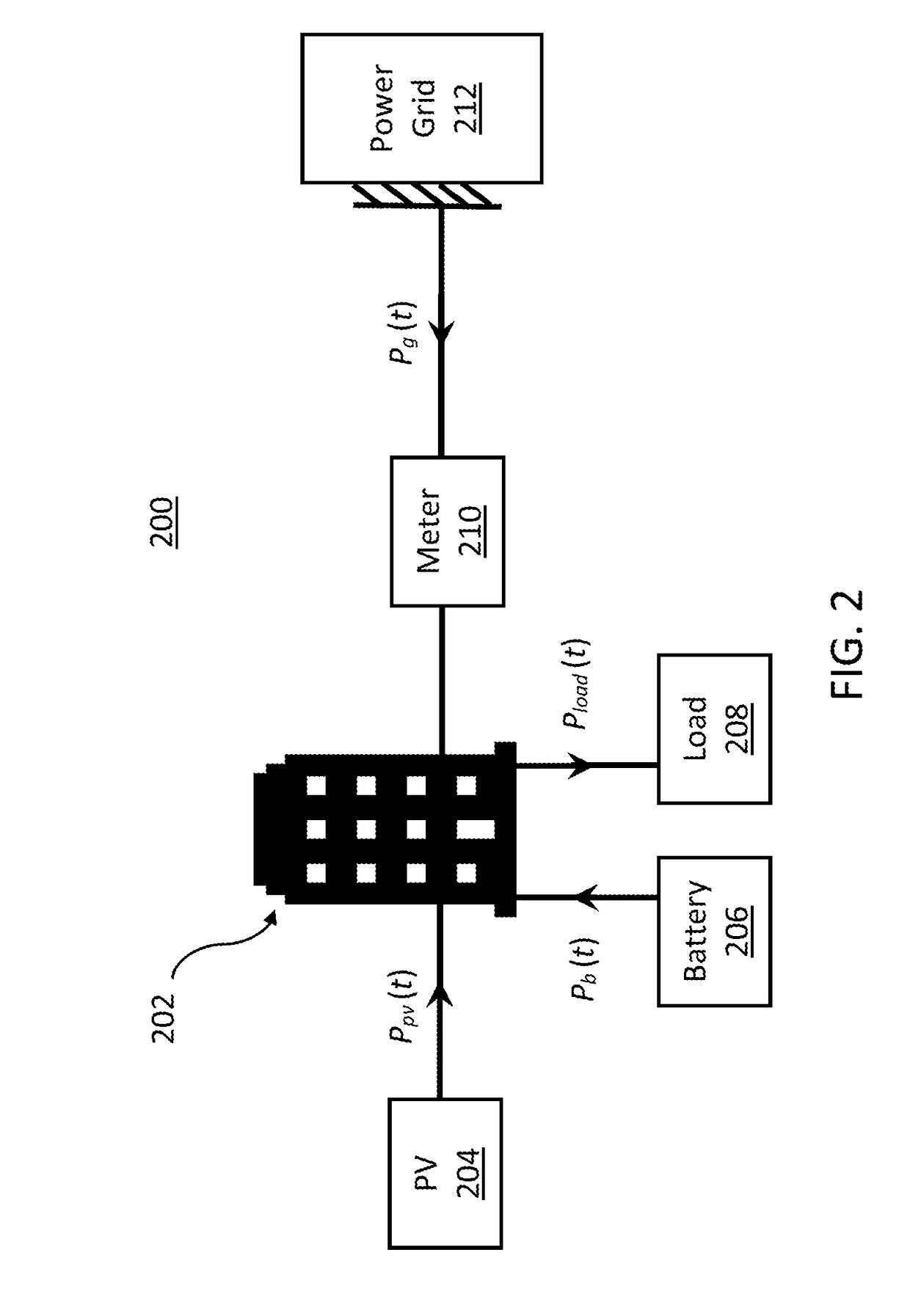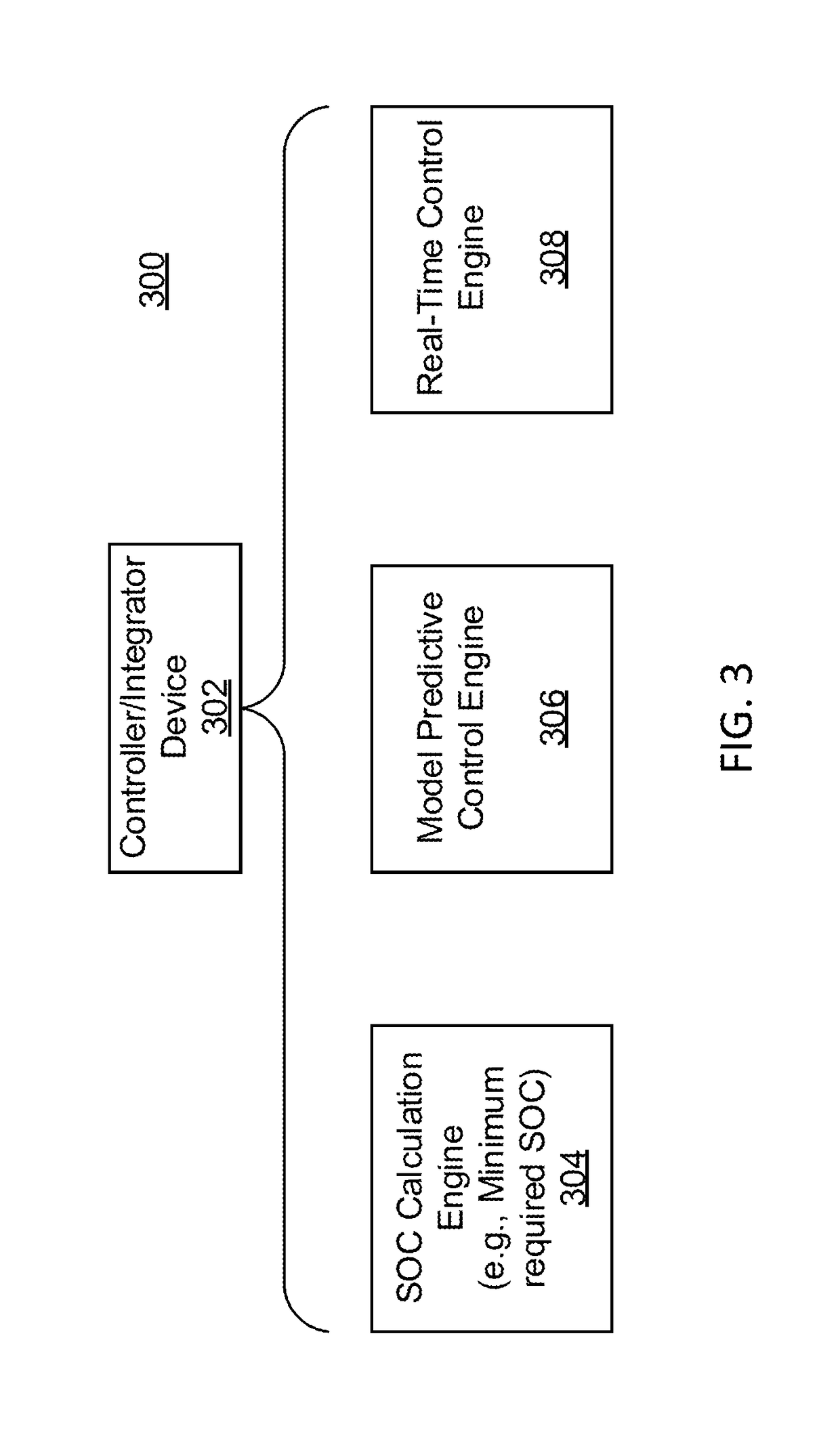System and method for model predictive energy storage system control
a technology of energy storage system and model, applied in the direction of greenhouse gas reduction, instruments, transportation and packaging, etc., can solve the problems of not providing any type of controller mechanism for charging/discharging functions, not enough energy stored in the battery using such conventional systems and methods, and operating challenges for utility companies
- Summary
- Abstract
- Description
- Claims
- Application Information
AI Technical Summary
Benefits of technology
Problems solved by technology
Method used
Image
Examples
Embodiment Construction
[0019]In accordance with the present principles, systems and methods are provided for real-time management of energy storage systems to maximize PV-utilization and provide optimal charging and discharging functions while minimizing demand charge costs.
[0020]In one embodiment, systems and methods for real-time management of energy storage systems using a model predictive control (MPC) controller based on generated optimal charging / discharging profiles for one or more predetermined time periods (e.g., 15-minutes intervals) are described in accordance with the present principles. A benefit of the present systems and methods is minimization of the total excess PV generation sold to the grid and battery degradation costs. One or more constraints can be employed to guarantee that the DC thresholds will not be violated, keep the energy storage within the operational boundary, and avoid feed-in limitations in accordance with various embodiments. In some embodiments, energy storage systems (...
PUM
 Login to View More
Login to View More Abstract
Description
Claims
Application Information
 Login to View More
Login to View More - R&D
- Intellectual Property
- Life Sciences
- Materials
- Tech Scout
- Unparalleled Data Quality
- Higher Quality Content
- 60% Fewer Hallucinations
Browse by: Latest US Patents, China's latest patents, Technical Efficacy Thesaurus, Application Domain, Technology Topic, Popular Technical Reports.
© 2025 PatSnap. All rights reserved.Legal|Privacy policy|Modern Slavery Act Transparency Statement|Sitemap|About US| Contact US: help@patsnap.com



